
How I got a glimpse of the largest Nordic country.
I went to Sweden to present our planetarium study at an ACM's conference in Stockholm, and while at it, I visited an amazing visual research center at Linköping University campus. This trip was also the first time I got to Sweden, so naturally, the excitement ran high.
I landed at Sweden's biggest airport, which is served by not one, but three train stations. Two are for the express trains going directly to Stockholm, and one is for other regional and national connections. It's a good concept if one knows the details ahead; if not, chances are they would get an involuntary excursion of different stations before finding the correct platform. Of course, that was my case, but the subsequent impressions were mint! The station had a unique feel; its ceiling was not smooth concrete or composite cladding but rather a rough, cave-like organic form painted all black. Then, a train arrived and took the atmosphere to new heights. It was a retro-looking unit, also entirely black. All that was missing was a metal band performing in the corner, but even without it I still felt like I entered a secret underground lair. Yet, it wasn't a scene from a surreal movie; the experience was open for the broad public to immerse in.
In Stockholm, unusual stations are the norm. Its metro is often called the "world's longest gallery" on the internet, with 94 out of its 100 stations featuring art installations¹. Super!
One of my favorite decorations I saw was an indication of where the north is, just as I stepped out of the train. I like looking at maps, so I am usually not totally rubbish at having an idea of where I am. However, when I step out of a subway train and see no landmarks or sunlight to cast shadows to help me figure out my position, my sense of direction is broken. Not here, tho, as I got an instant re-calibration!
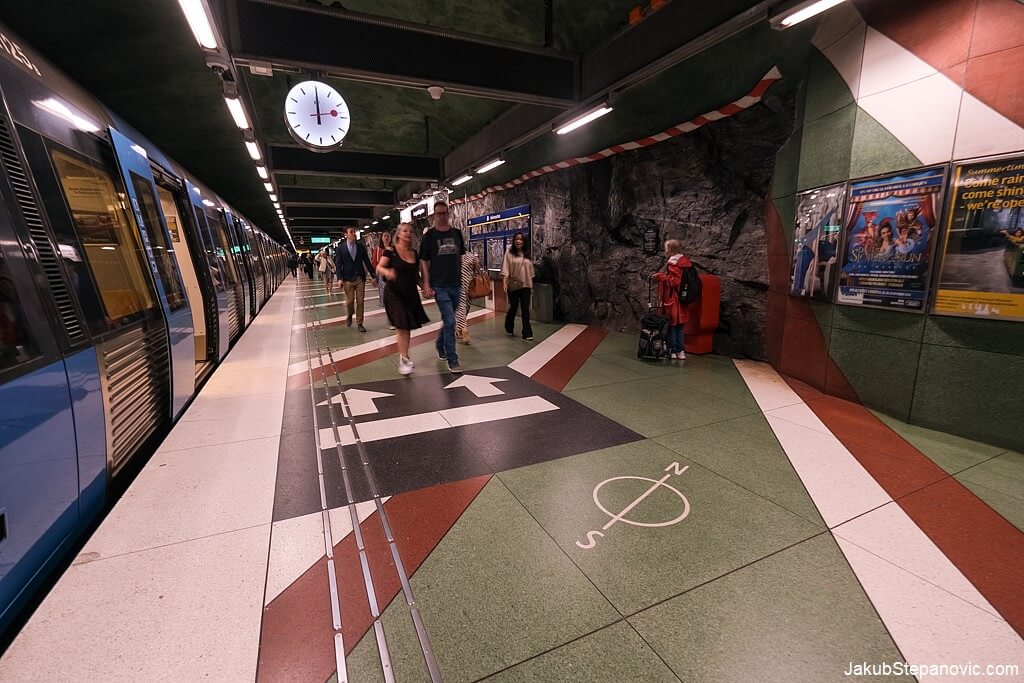
A practical decoration in the Kungsträdgården station.
Another notable feature of Stockholm Metro is cellular coverage, allowing one to check emails or directions on the go. It is, along Prague and Vienna, the only subway system where I experienced this, and I found it impressive. But let's stick with bold visual statements a bit more; they were noticeable everywhere, not only underground. Many streets I saw were colorful with diverse facades.
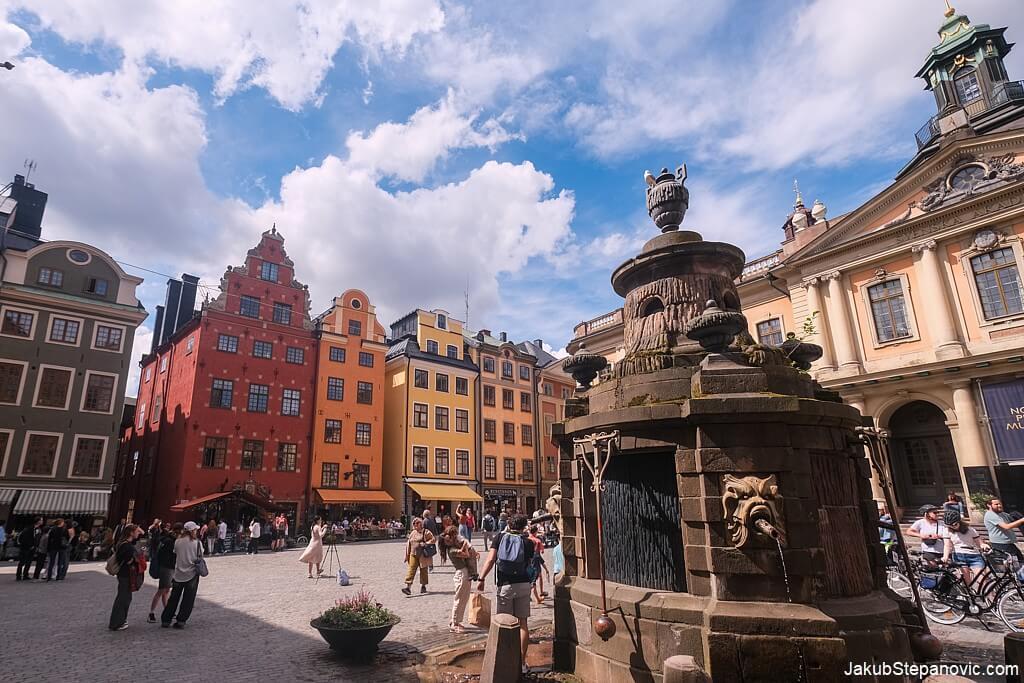
And it was not just the structures; I also noted more people being visually expressive than in other places I've been: many sported vivid clothing, unusual accessories, and haircuts. It made for a pleasant, inclusive feeling while walking around, and it made me think that it is like an ecosystem where cool people make cool places, and cool places make cool people.
Interesting people and delightful graphic details were common for the entire trip; the latter, patterns that caught my eye made for an extra post. Now, let's keep moving because my first stop wasn't Stockholm, but a city about 160 km southwest: Norrköping. So, I changed from one train to another, and together with the sun that evening, we waved bye to the Swedish capital. Granted, the sun did it in a more spectacular fashion.

The journey to Norrköping was excellent. We traveled at speeds exceeding 100 miles per hour in a quiet and comfortable setting. The train tilted in turns so smoothly that my brain didn't capture the acceleration. Suddenly, it looked like the buildings, trees, and lakes outside the window were tilted. As for the scenery, it evoked the outlooks I saw in neighboring Finland, which brought good memories to an already elated state of mind. Arriving was pretty neat too; just outside the station's platform lies a park, making for a welcoming first impression of the city. Moreover, look at the sky!

It was 10:25 pm, and while the sun was already beyond the horizon, the daylight was still here to stay a while. As I found my hotel and got to bed, the sky was still bright enough that one could function outside without a lamp. Together with seagulls screaking outside my window, for a change, this reminded me of the times I spent in Scotland around summer solstice. More memories that are close to my heart, good night it is!
Waking up the following day further added to the Scottish vibes: it rained hard. It could also be Belgian vibes, as they had the wettest half-a-year since records began². It's okay; I'd take decent temperatures and rain over scorching heatwaves, so I set off into the deluge without much fuss. It also made the air cleaner – as I walked to my meeting, it was so fresh as if I breathed pure energy. The morning couldn't start much better, and it set the tone for the whole day.
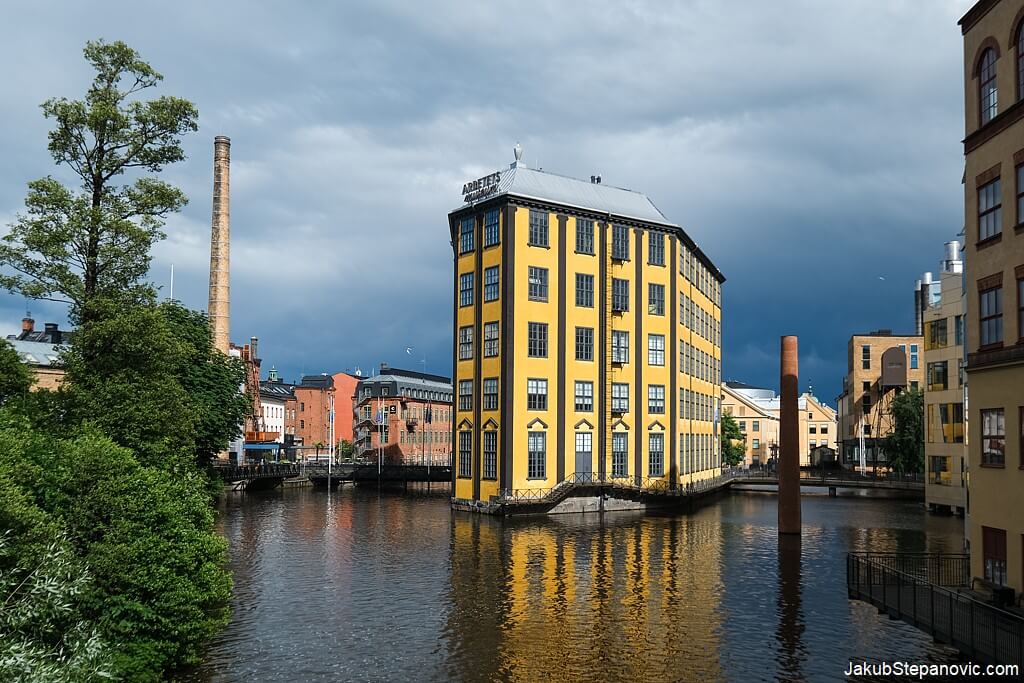
Norrköping. Like Venice, but with raw factories instead of opulent houses.
First, the city itself is very much to my liking. It has a similar size to Leuven or Dundee: small enough so one can walk or cycle to places with ease without spending hours commuting, but it is big enough to have a thriving culture, infrastructure, and shops. There is also a river going through, which always makes cities better. Think how sad cities like Budapest, Bratislava, London, Shanghai, and many others would be if they lost their rivers. As a bonus, the river in Norrköping features multiple weirs.
Norrköping used to be bustling with textile manufacturers, but like elsewhere in Europe, the production moved to countries with cheaper labor, leaving the plentiful industrial buildings behind. Consequently, cities like Norrköping faced a dilemma of what to do with the premises. Some simply destroyed everything because it was old, not hip, or the mayor's cousin owned a demolition company. Meanwhile, others repurposed the buildings with new life, allowing the industrial heritage to decorate the places and illustrate the local history. You might know that I am a fan of the second approach, and Norrköping is a case study of how to do it right. It is absolutely terrific.
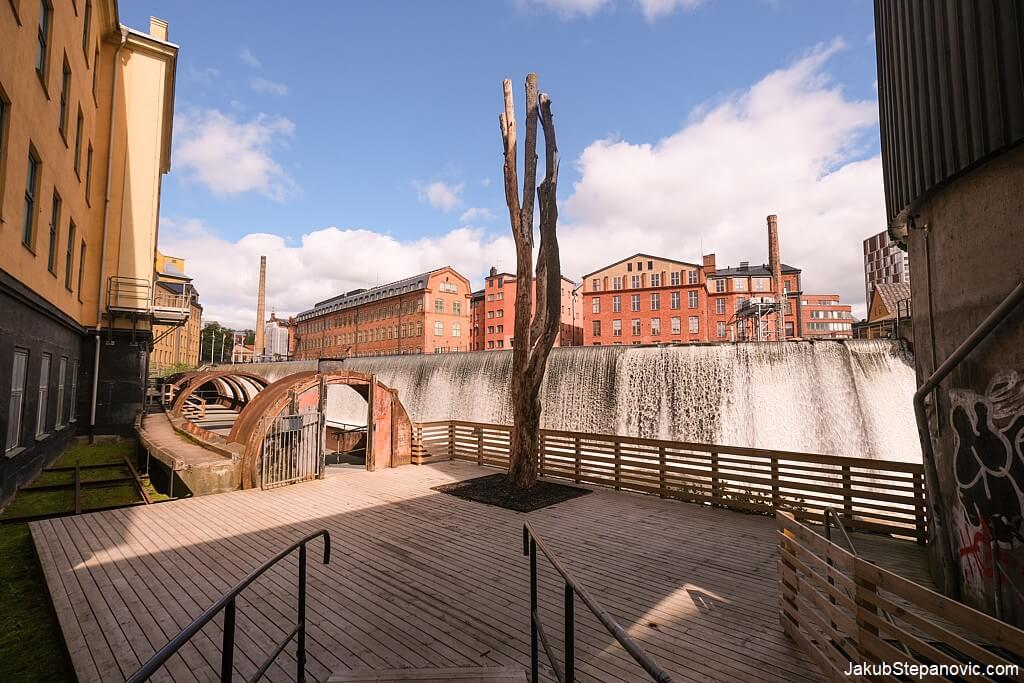
Modern structures pleasantly complement the older ones, and the area is well-connected by frequent bridges and clean walkways.
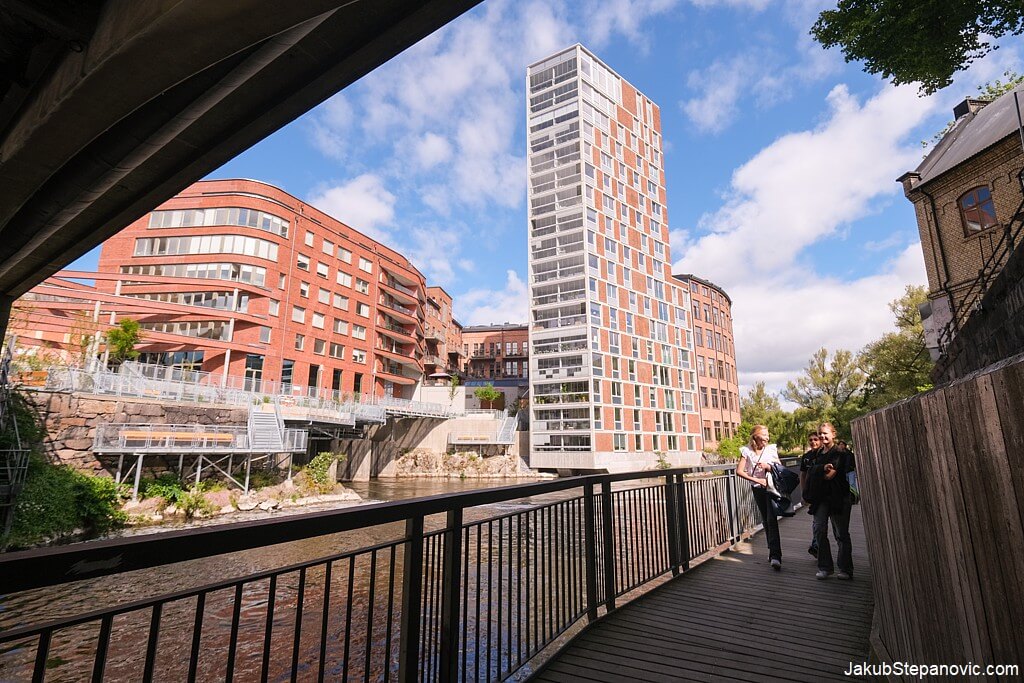
Let's go back to the rainy morning: One of the buildings from the former era houses the Visual Center C now, a hub for data visualization and science communication combining research and public outreach activities. And that is where I headed.
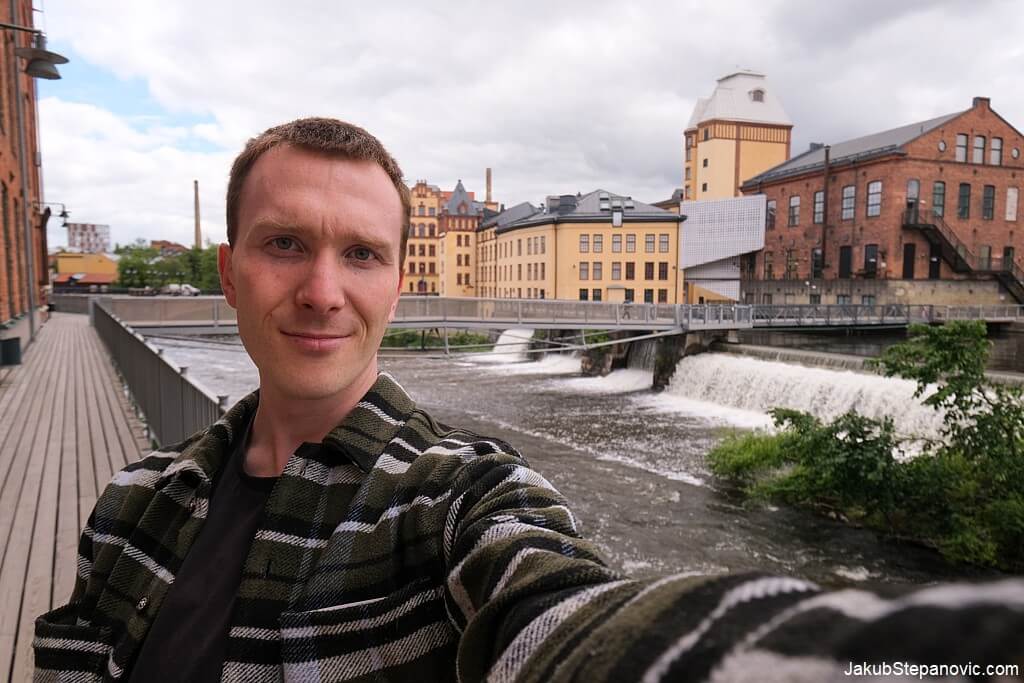
Me in front of the Visualization Center C.
The center is a joint venture made mostly by the local municipality and Linköping University, where they have multiple floors of interactive installations and a dome theater. Besides enjoying the exhibits, I got a full day of meetings with kind folks, with whom I had lots of inspiring talks (not only) about visualizations, planetariums, and uncertainties in science. As such, the day went by super-fast; in what felt like no time, I was back in that bed with seagulls behind the window.
The next day I captured the photos of the city you saw above, and took a bit of time to...
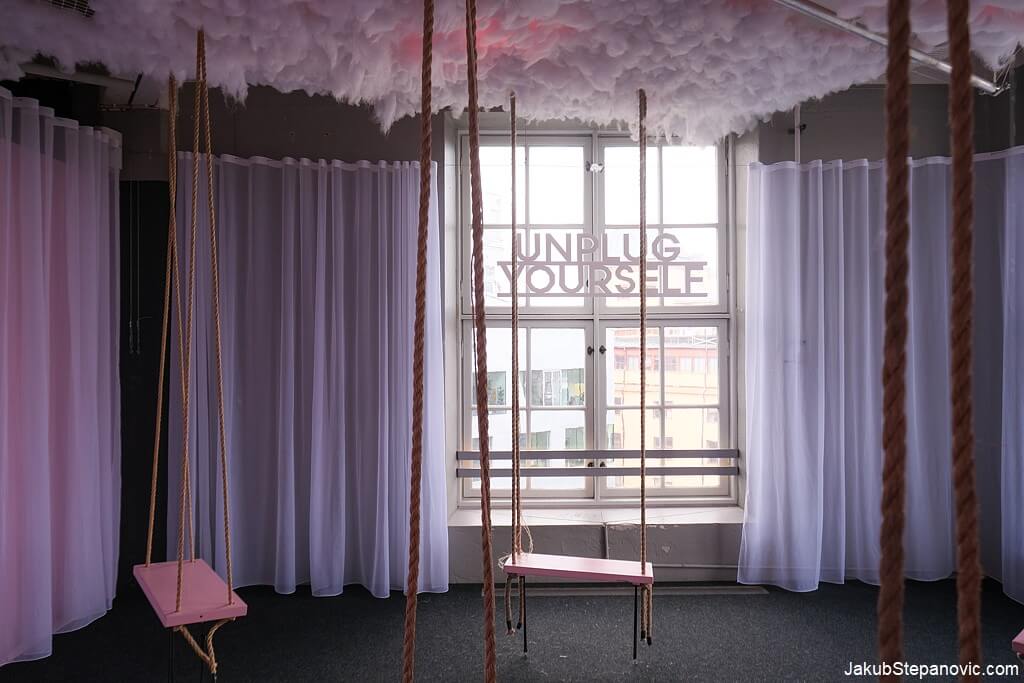
..visit three museums, and travel back to Stockholm.
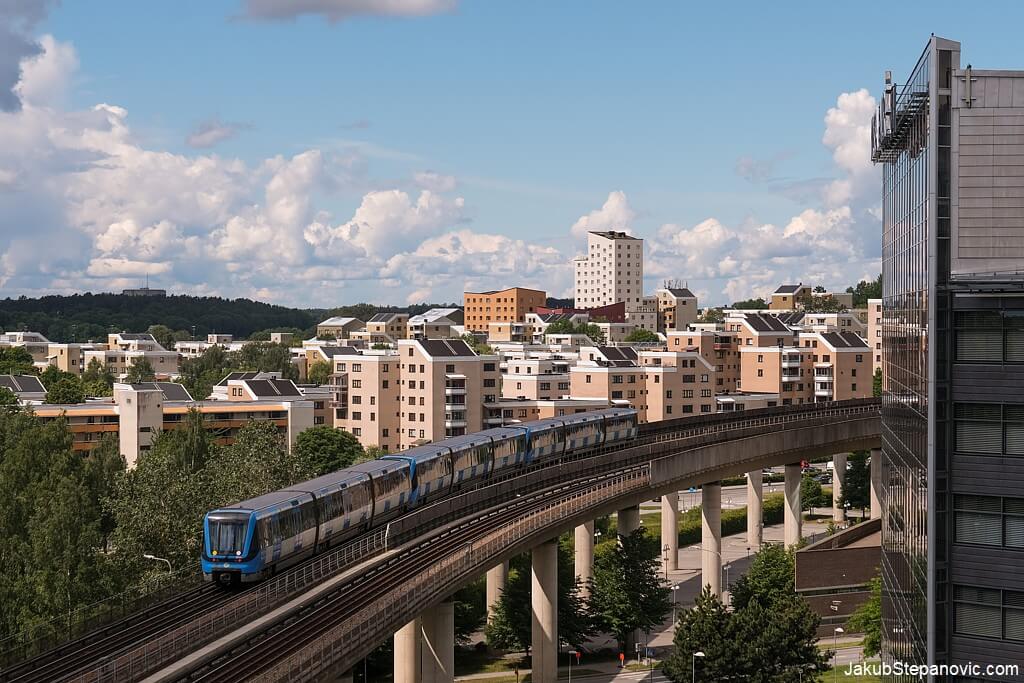
The conference was in a district about 30 minutes train ride from downtown, Kista, and by the time I got to my hotel there, it was evening already. Still, the day was far from over. I reflected on my visit to Dublin, one of the first conferences in Europe I attended, where I ended up walking a marathon distance to experience as much of the city as possible. Here, too, I had an urge to go out and explore, but I guess I am getting old. I went to bed instead.
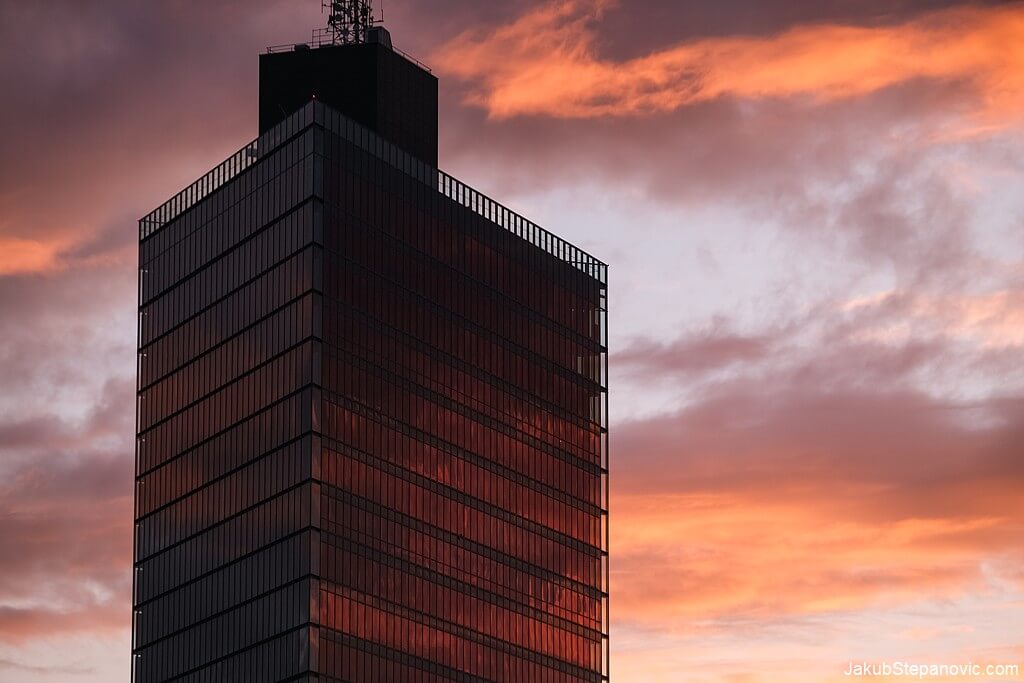
It's okay, though. I might not cover as much of the ground, but I enjoy other features of the place that I didn't see previously: the language, for example. I used to care less; now, I found it genuinely fascinating and tried to decrypt what each sign meant.
The following days I was at the conference, so I did not see much beyond Kista. Still, the district was surprisingly pleasant! They have plenty of greenery and nice walking/cycling paths, and also three of five of Stockholm's tallest buildings.
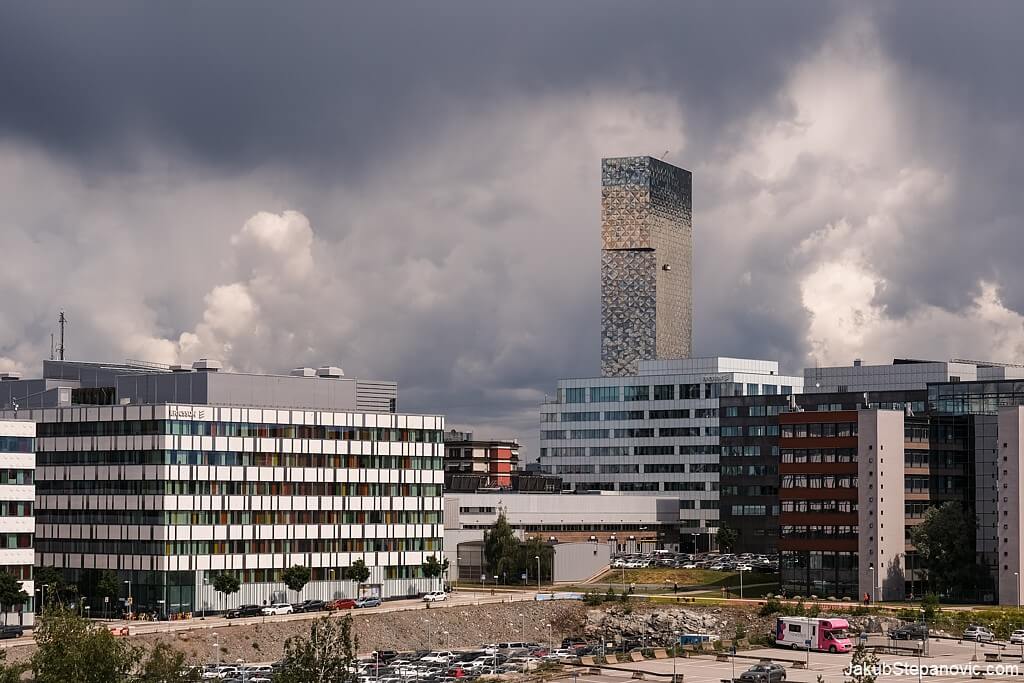
Kista is something of Sweden's version of Silicon Valley; more than 1,000 tech companies are based there³. The biggest one is Ericsson, the brand of the first cellphone I ever owned. Well, and I got invited to their headquarters to see what the telecommunication future will look like. Intriguing, it was.
At the conference, I enjoyed the presentations and cherished meeting the other folks. We talked about research during the day, and customs, travels, Sweden, dreams, and art during the night. Midsummer is the best!
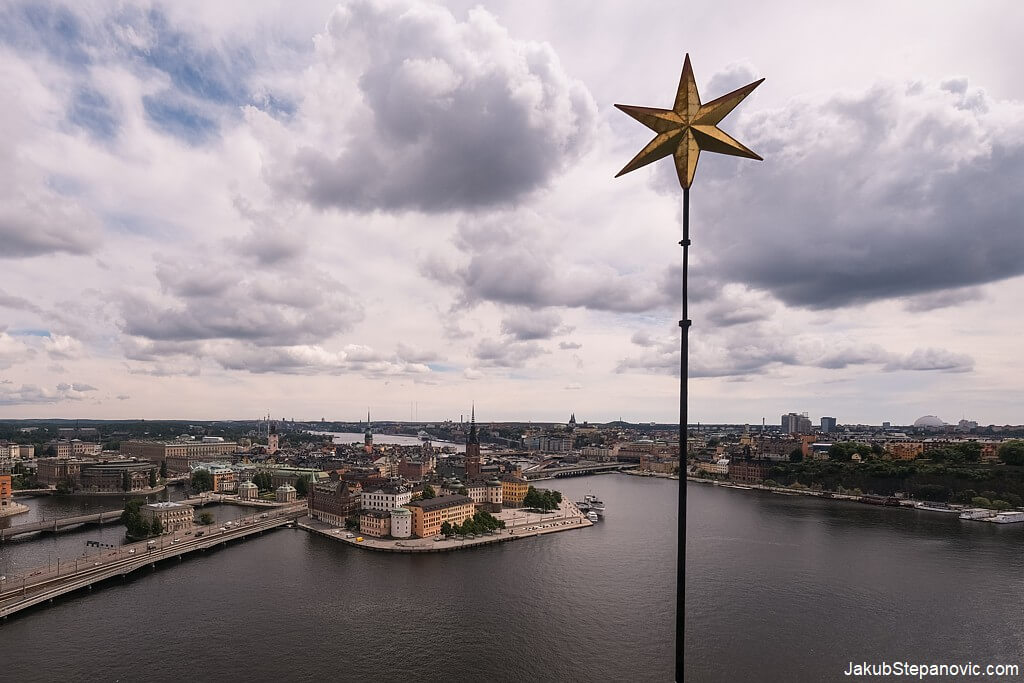
When the conference ended, I went to see the downtown with my new friends. Stockholm spans over 14 islands, so it has an extensive waterfront giving an overview of its buildings – some of which look like exuberant wedding cakes.
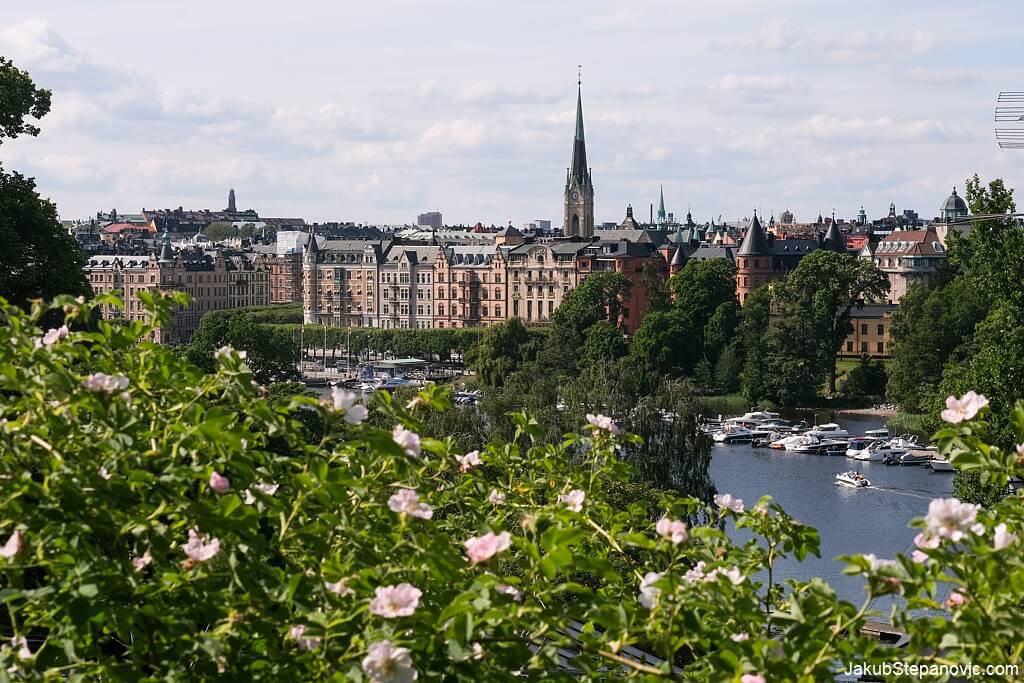
Other than that, we saw more charming streets,
...coastline with mighty ships...

... and great rock slabs inspiring to ride a bike.
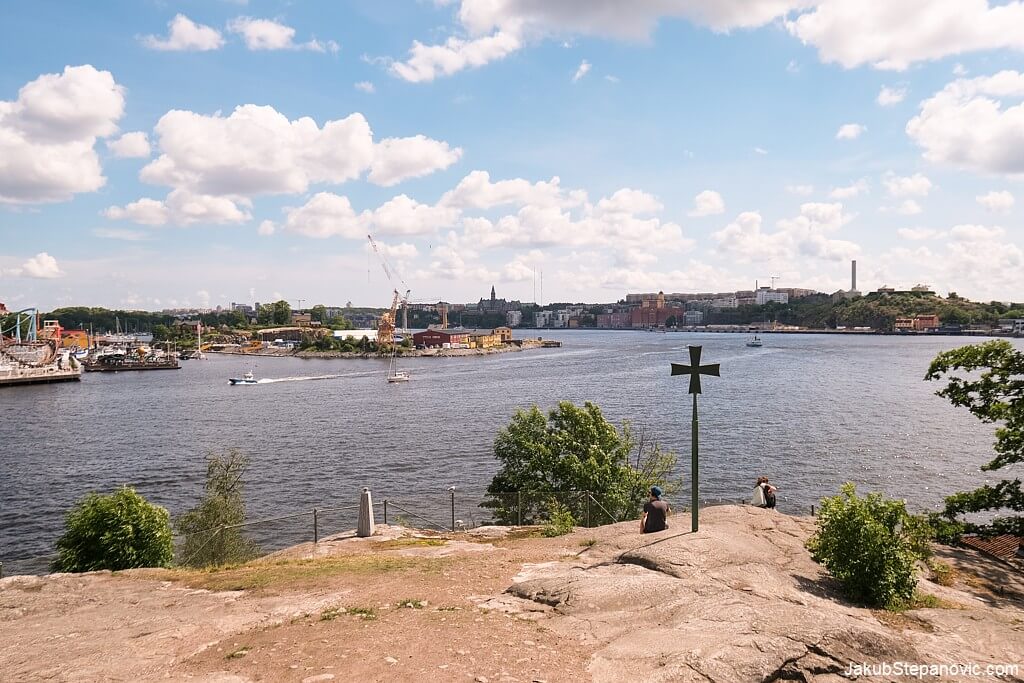
I didn't get to cycle this time, but that's fine. We ate ice cream and visited Skansen, an extensive open-air museum with historic houses brought from all over Sweden.
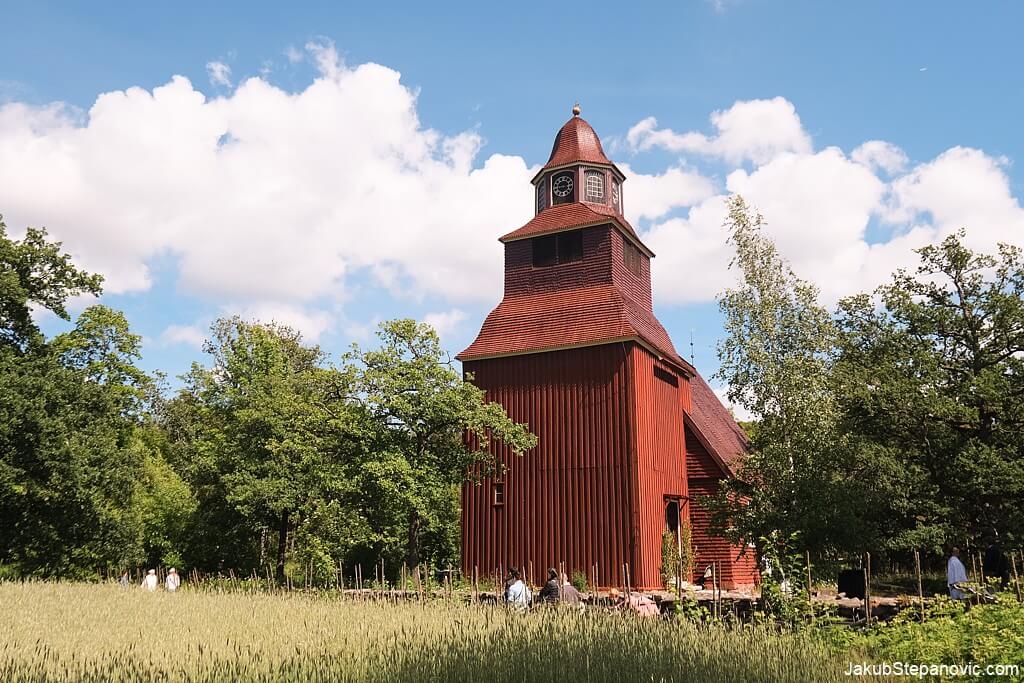
Besides houses, they also demonstrate the music and crafts of Sweden's yesteryear.
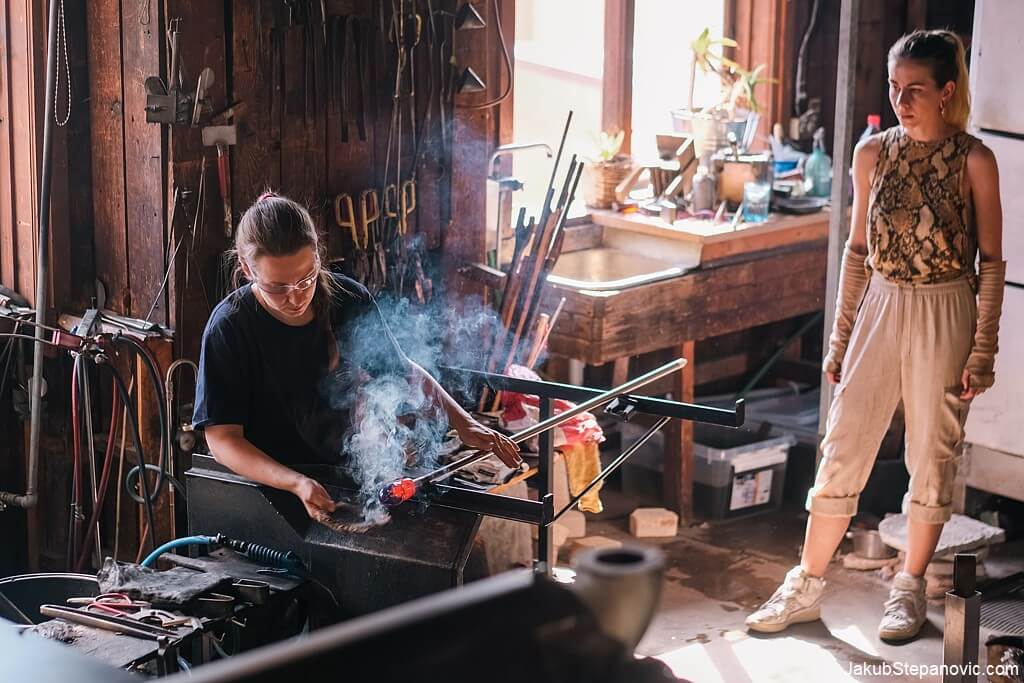
What else..
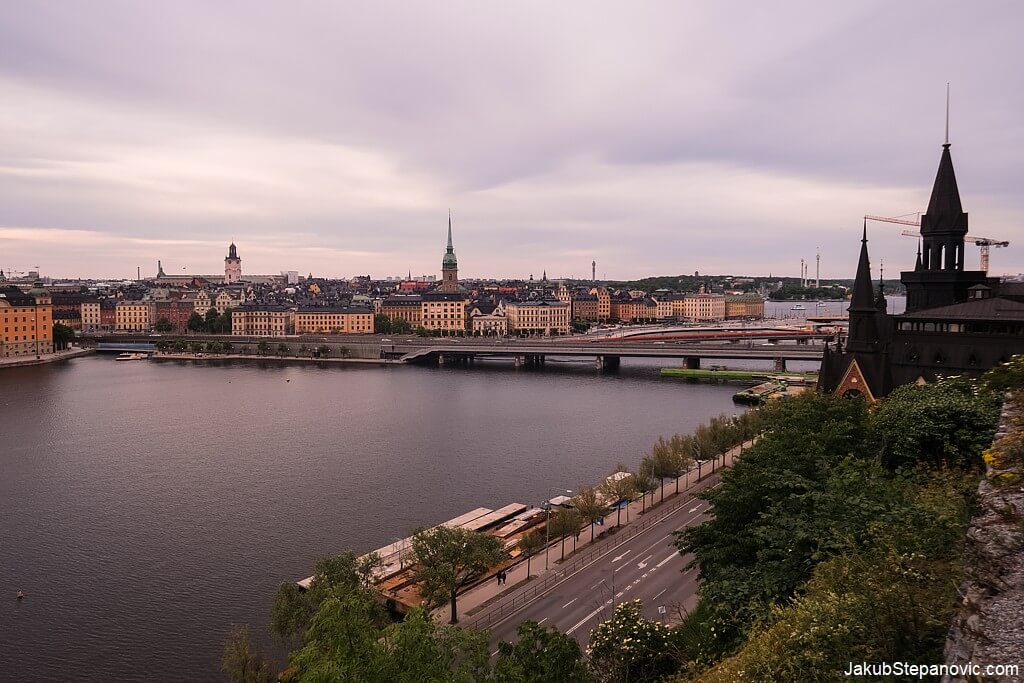
Stockholm has many diverse towers...
..and pubs. In one, we took shelter during another shower and found a concert as a bonus.
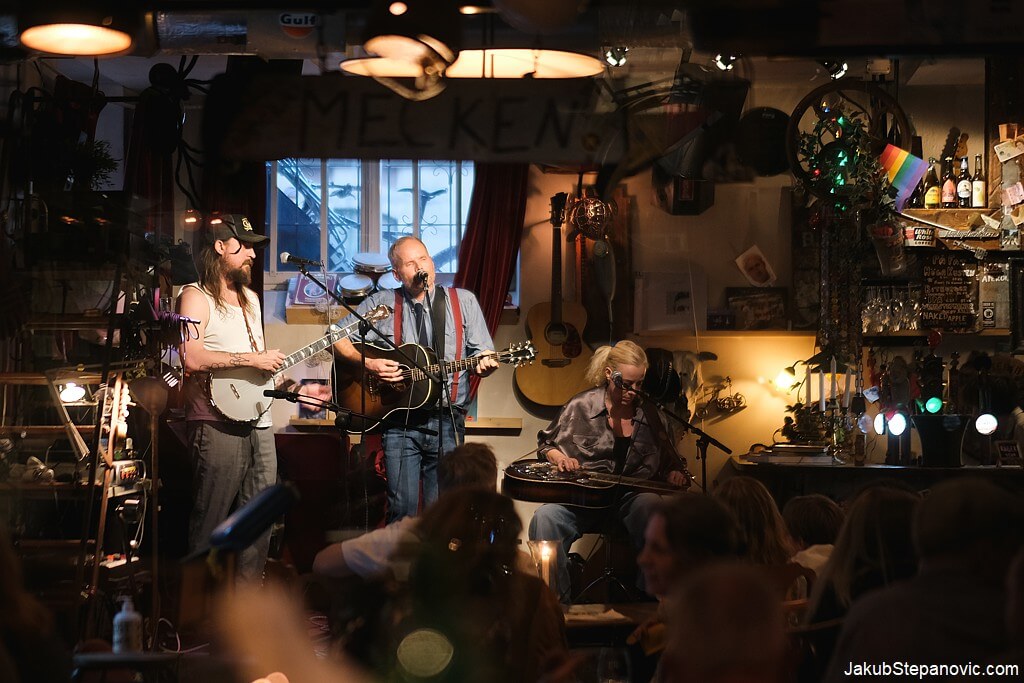
It wasn't raining anymore when we got out, so we climbed somewhere...

...with a fab view to end the day.
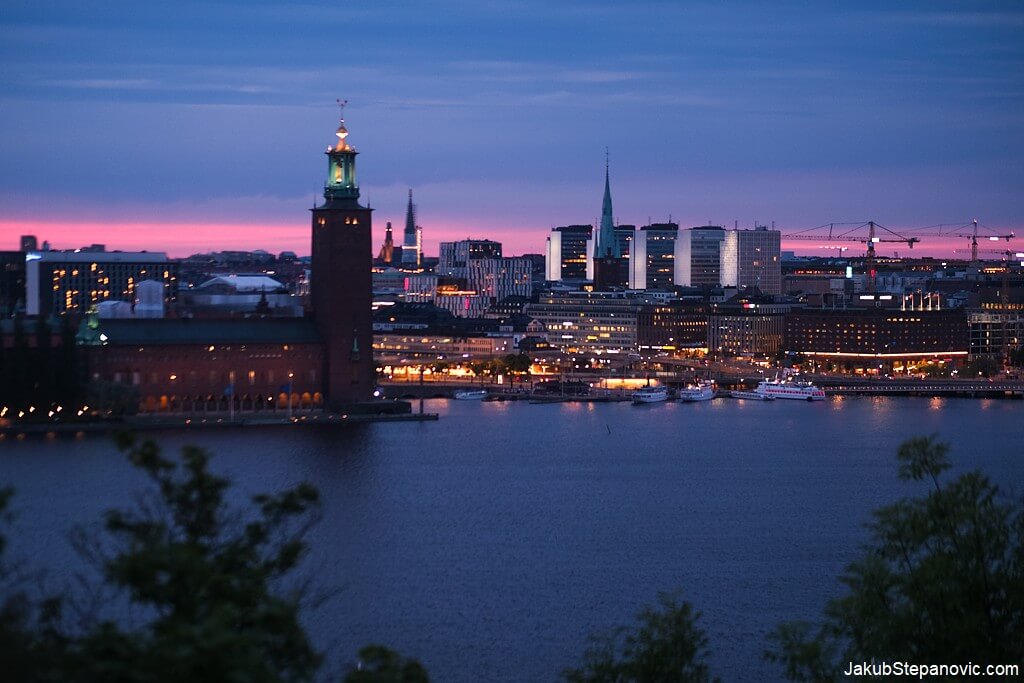
Oh, and finally, the security at the airport allowed me to keep my shoes on, my laptop and toothpaste in my bag, my watch on my wrist, and even water in my bottle. Perhaps they actually wanted to prevent danger and not to harass people. Take note, other countries!
The trip was outstanding to the point that I now get a reminder every time I am in my living room.
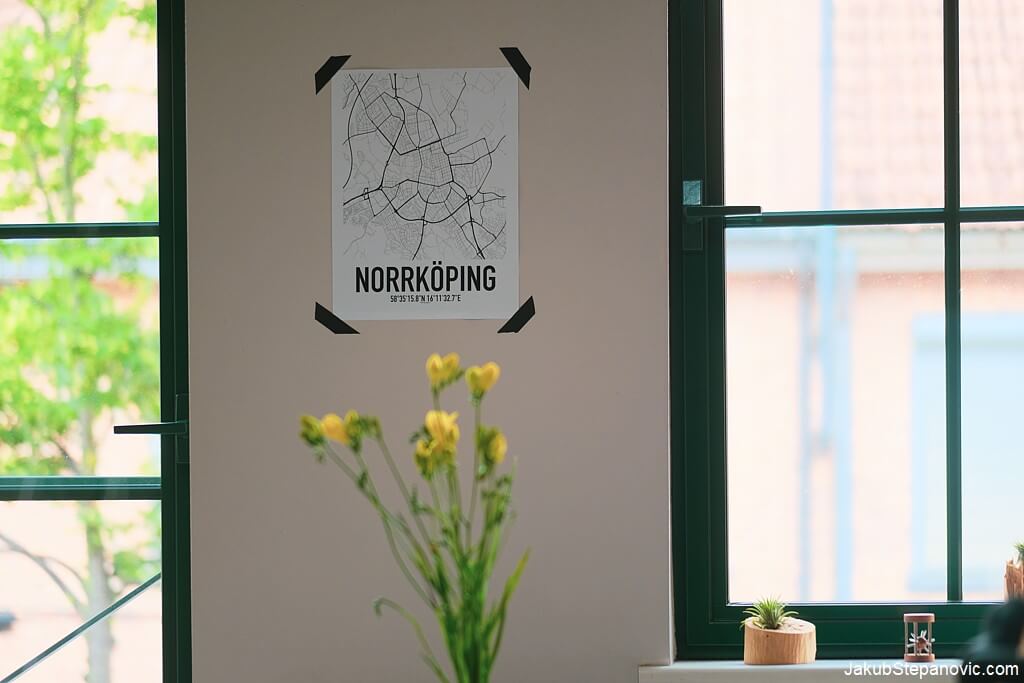
Big thanks to everyone who contributed, and thank you for reading! You can find my other articles in the Blog Archives.
Tap for claims about art, weather, and Kista's:
1) The world’s longest art exhibition | Storstockholms Lokaltrafik.
2) Past six months were “the wettest since records began” | VRT NWS.
3) The area with over 1000 companies | Kista Science City.
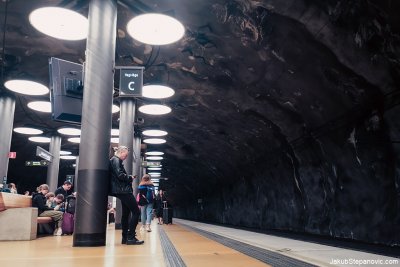
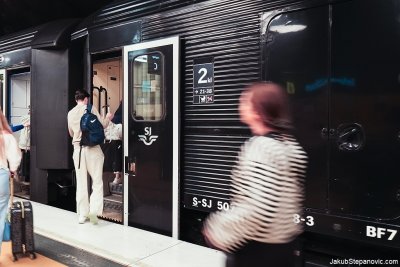
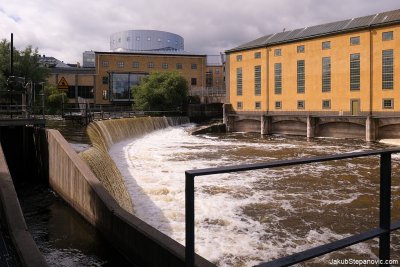

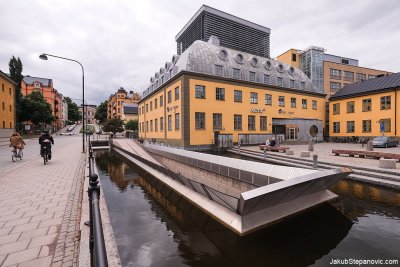
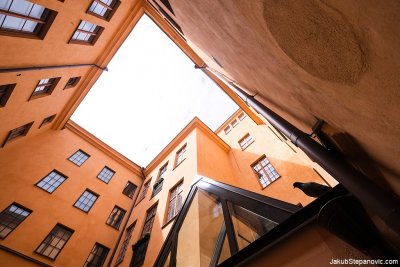
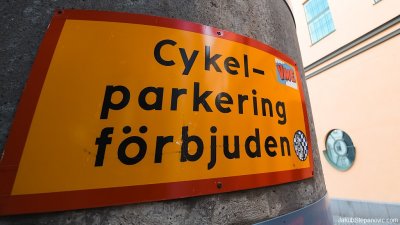
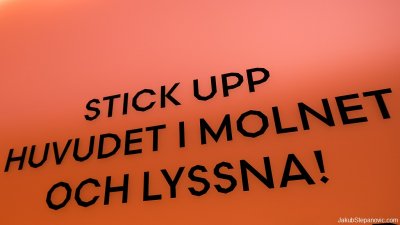
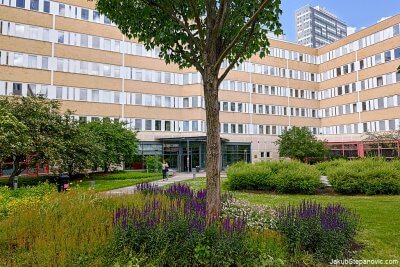
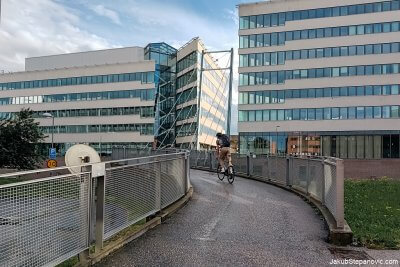
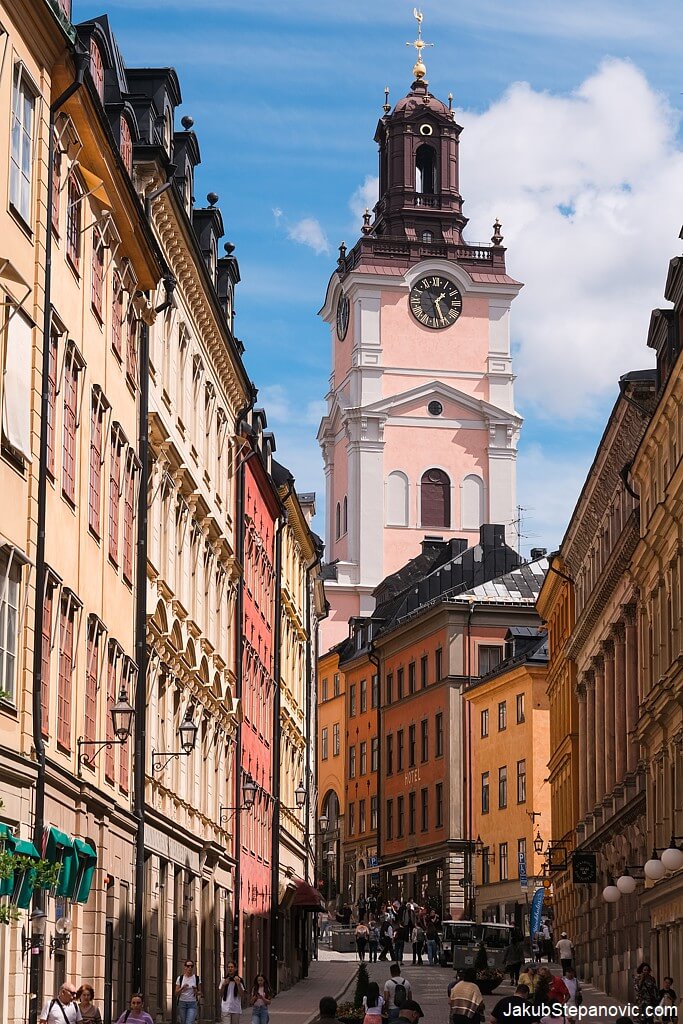
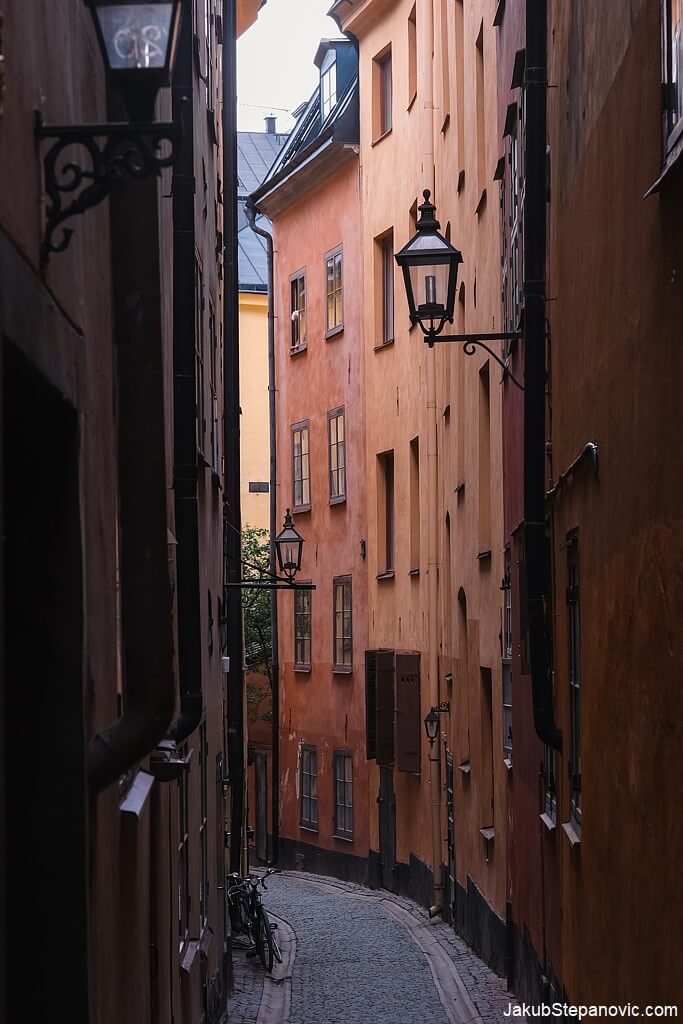
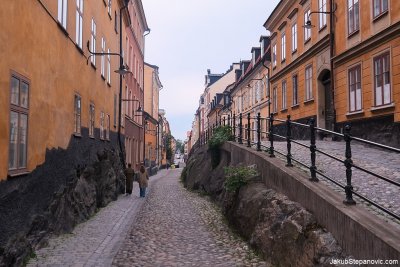
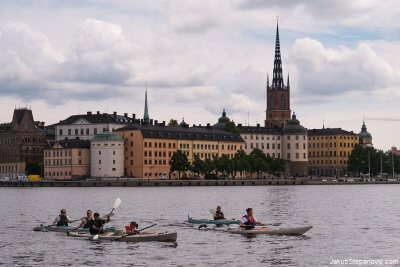
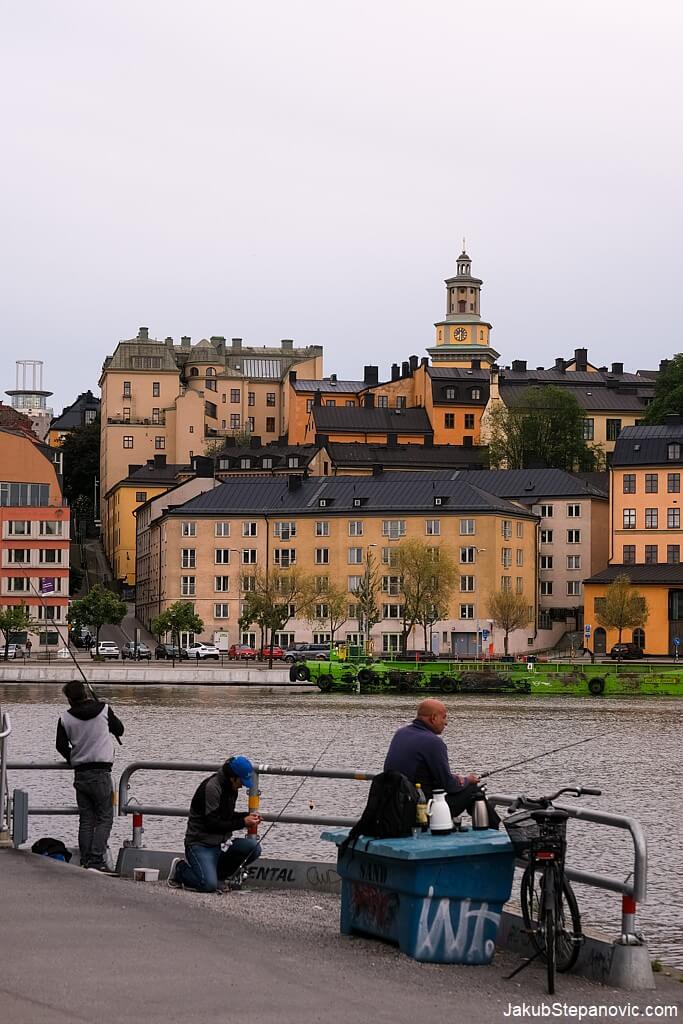

Comments are closed.